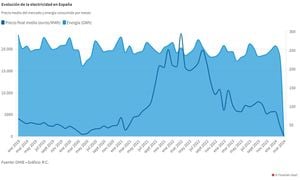Ukrainians are bracing for fluctuations in the exchange rate of the dollar against the hryvnia as financial forecasts for February 2025 suggest more rollercoaster rides than calm seas. Over the course of the month, economic experts from various banks have been assessing how external and internal factors could affect the value of the Ukrainian currency.
According to the latest statements from the National Bank of Ukraine (NBU), the official dollar exchange rate is anticipated to hover around 41.6 to 42.2 UAH per dollar by the end of February. This marked shift has raised eyebrows among analysts who closely monitor currency trends, especially as geopolitical events continue to trickle down to affect local economies.
"The dollar will likely be around 42 UAH / $ by the end of the month," said Alexander Parashiy, head of the analytical department at Concorde Capital. His insights indicate confidence among professionals about the stabilized conditions around exchange rates, especially after recent periods of volatility.
On January 13, 2025, the dollar had peaked at 42.28 UAH, illustrating the stark contrasts from week to week as it dropped to 41.5919 UAH just as recently as February 24.
Market behavior around foreign currencies has continued to evolve as tax periods close within Belarus and Russia, providing temporary bolstering to their respective currencies. Observers have noted how these factors overlay uniquely with Ukraine's own economic situations, leading to fluctuated demand for the dollar.
Taras Lesovoy, head of the treasury department at Globus Bank, explained, "We expect the official rate will fluctuate between 41.6-42.2 UAH" as he outlines the parameters for anticipated rates. He emphasizes the significance of internal market activities and the relatively tight correlation between interbank and cash rates.
Additional insights reveal how inflation is influencing the market. Inflation rates have exhibited growth, with January 2025 seeing inflation move from 12% to 12.9%. Predictions suggest inflation rates could slow down to about 13.6-13.8% this February. Experts have speculated on how administrative price adjustments for utility and regulatory changes can weigh heavily on consumer confidence and spending.
While local trends seem to show signs of stabilization, the elephant in the room remains the extended conflict and geopolitical tensions surrounding Ukraine—factors nearly impossible to predict with precision. "Any external factors beyond economics may influence our currency metrics," adds Lesovoy, hinting at how closely the situation needs to be monitored overseas.
This level of uncertainty demands flexibility from policymakers and analysts alike. The NBU continues to influence market conditions by selling currency reserves when necessary, ensuring stability during periods of rising demand for foreign currencies.
The fluctuations have also led to many Ukrainians prioritizing dollar investments over local currency deposits, understandably so; the caution practiced during volatile economic times can reshape consumer behaviors sharply. With approximately 65.2% of deposits being demand deposits, which could be easily converted, many citizens appear eager to react quickly to financial shifts.
Component forecasting remains complicated, yet systemic perspectives offered by Parashiy and other experts pose the potential for the dollar to stabilize by March, aligning closer with the expectations for inflation's deceleration, assuming no major geopolitical disruptions occur.
Given the prevailing dynamics, the month of March may witness the dollar reaching approximately 42.5 UAH if the recent trends continue, though analysts maintain wariness about sudden shifts stemming from external interferences.
All said, economists urge citizens to remain cautious as changes across the board may occur, reiteratively wedged between their financial security and regional economic health, especially amid the whispers of both local and global turbulence.



